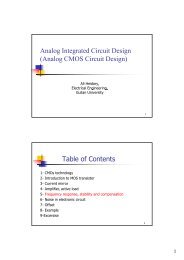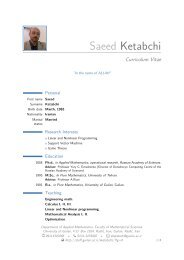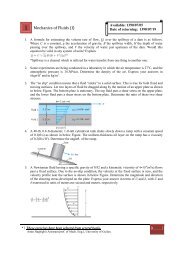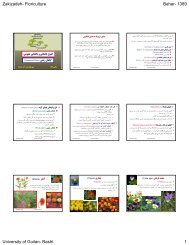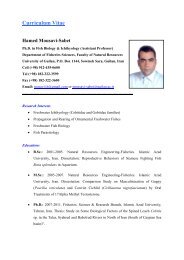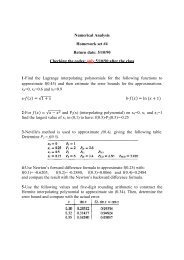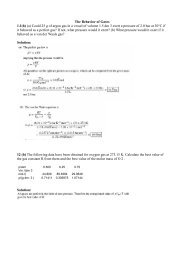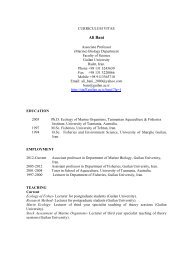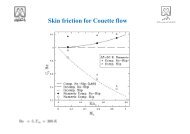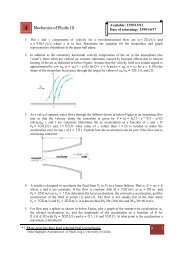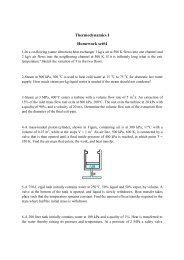Medical Tourism in Developing Countries
Medical Tourism in Developing Countries
Medical Tourism in Developing Countries
- No tags were found...
Create successful ePaper yourself
Turn your PDF publications into a flip-book with our unique Google optimized e-Paper software.
Promot<strong>in</strong>g <strong>Medical</strong> <strong>Tourism</strong> ● 97thus keep<strong>in</strong>g costs lower than they would be if these <strong>in</strong>puts had to beimported (also discussed below).The benefits of keep<strong>in</strong>g production costs down are obvious. For the<strong>in</strong>ternational patient, low production costs translate <strong>in</strong>to sav<strong>in</strong>gs that canbe passed on to the consumer <strong>in</strong> the form of lower prices. In addition tolow prices, <strong>in</strong>ternational patients also benefit with respect to the quantityof attention they receive. When costs of provid<strong>in</strong>g medical services are low,dest<strong>in</strong>ation hospitals can hire more nurses and support staff per physicianthan <strong>in</strong> the United States, enhanc<strong>in</strong>g the patient’s experience. F<strong>in</strong>ally,foreign <strong>in</strong>vestors also benefit from low costs of production. They are morelikely to <strong>in</strong>vest where wages are lower and costs associated with litigationand regulations are m<strong>in</strong>imal. 4Price-Reduc<strong>in</strong>g Competition between SuppliersAnecdote: The Serbian diaspora <strong>in</strong> Italy travels to Serbia for vacation andmedical tourism. Plastic surgery and dental work are the most popularservices. Serbian physicians who practice <strong>in</strong> Rome are compet<strong>in</strong>g with doctors<strong>in</strong> their home country and as a result, they have begun to reevaluatetheir pric<strong>in</strong>g strategy. To stay competitive among the Serbian diasporapatients, Serbian diaspora physicians <strong>in</strong> Rome began offer<strong>in</strong>g medical treatmentsat the same price patients would pay if they went to Belgrade. Suchprice discrim<strong>in</strong>ation between Serbian diaspora patients and Italian patientsis the result of competition that so far only the Serbian market enjoys.A similar pric<strong>in</strong>g strategy is pursued by suppliers of medical tourism aroundthe world, with the aim of ma<strong>in</strong>ta<strong>in</strong><strong>in</strong>g or <strong>in</strong>creas<strong>in</strong>g market share by reduc<strong>in</strong>gprices (even if it provokes a response by other doctors, hotels, rental caragencies, etc.).Price-cutt<strong>in</strong>g is an <strong>in</strong>tegral part of medical tourism s<strong>in</strong>ce for the mostpart no s<strong>in</strong>gle country has a monopoly on <strong>in</strong>vasive, diagnostic, and lifestyleservices although, as discussed <strong>in</strong> chapter 3, countries are try<strong>in</strong>g to highlightdifferences between themselves and other dest<strong>in</strong>ations. Similarly, nos<strong>in</strong>gle country has a monopoly on tourist attractions. Many tout an as-yetunexploredangle, try<strong>in</strong>g to create a monopoly by drumm<strong>in</strong>g up demand(an entire literature has cropped up on the competitive strategies of touristdest<strong>in</strong>ations 5 ). Despite these efforts, substitution of one dest<strong>in</strong>ation foranother is common across the globe, highlight<strong>in</strong>g the <strong>in</strong>terchangeability oftourist and medical dest<strong>in</strong>ations and underscor<strong>in</strong>g that alternatives areboth available and plentiful. For many tourists, one sunny beach isperceived to be like another, one exotic person like another; for medicaltourists, a porcela<strong>in</strong> tooth fill<strong>in</strong>g is just that—a porcela<strong>in</strong> tooth fill<strong>in</strong>g.





